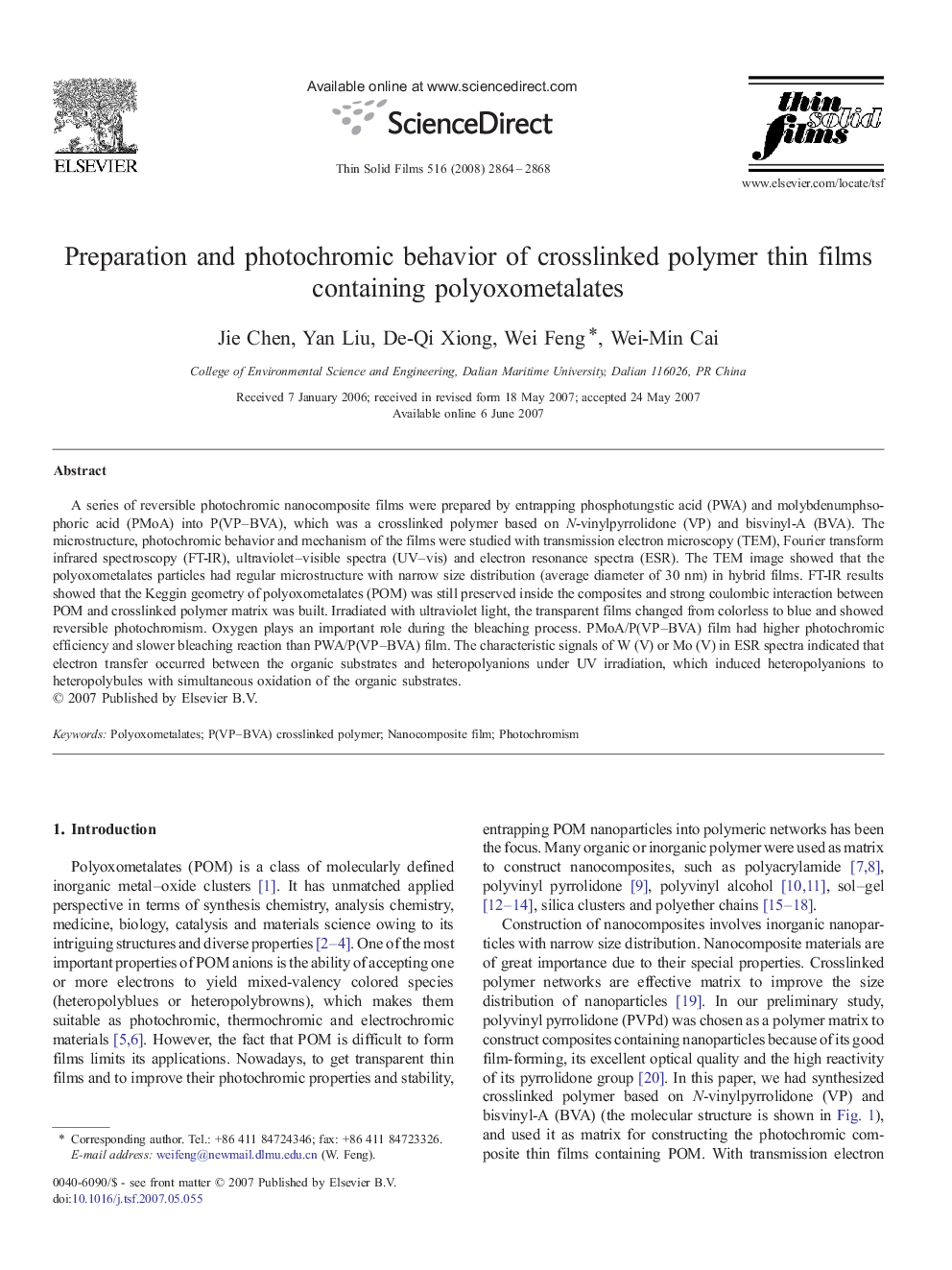| Article ID | Journal | Published Year | Pages | File Type |
|---|---|---|---|---|
| 1673416 | Thin Solid Films | 2008 | 5 Pages |
A series of reversible photochromic nanocomposite films were prepared by entrapping phosphotungstic acid (PWA) and molybdenumphsophoric acid (PMoA) into P(VP–BVA), which was a crosslinked polymer based on N-vinylpyrrolidone (VP) and bisvinyl-A (BVA). The microstructure, photochromic behavior and mechanism of the films were studied with transmission electron microscopy (TEM), Fourier transform infrared spectroscopy (FT-IR), ultraviolet–visible spectra (UV–vis) and electron resonance spectra (ESR). The TEM image showed that the polyoxometalates particles had regular microstructure with narrow size distribution (average diameter of 30 nm) in hybrid films. FT-IR results showed that the Keggin geometry of polyoxometalates (POM) was still preserved inside the composites and strong coulombic interaction between POM and crosslinked polymer matrix was built. Irradiated with ultraviolet light, the transparent films changed from colorless to blue and showed reversible photochromism. Oxygen plays an important role during the bleaching process. PMoA/P(VP–BVA) film had higher photochromic efficiency and slower bleaching reaction than PWA/P(VP–BVA) film. The characteristic signals of W (V) or Mo (V) in ESR spectra indicated that electron transfer occurred between the organic substrates and heteropolyanions under UV irradiation, which induced heteropolyanions to heteropolybules with simultaneous oxidation of the organic substrates.
